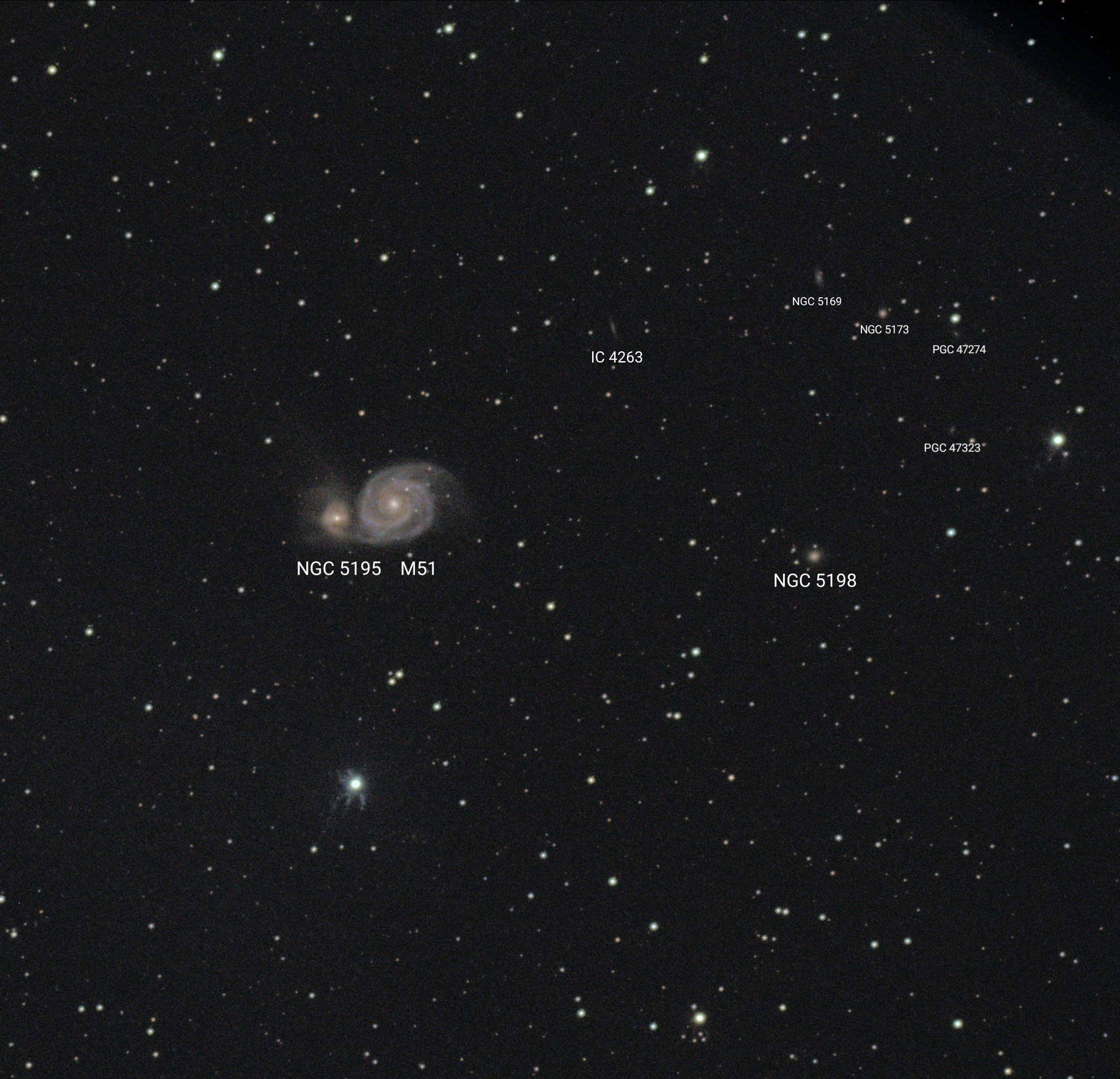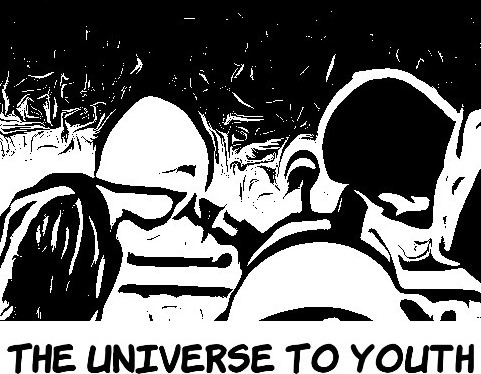The Universe To Youths
A great project to introduce youths into the fascination of physics, technology and astronomy
Please watch! This project video gives you a good overview!
On THIS WEBSITE you will find The Universe to Youths electronic booklet (edited by Viktória Fröhlich and Szilárd Csizmadia), a Visual Messier Guide, all slides, talks, recordings, the program and pictures taken within our project.
The main reasons for the project - and our pedagogical concept:
Improving STEM - which means science, technology, engineering and mathematics teaching (with the german analogon MINT – which stands (in german language) for mathematics, computer science, natural sciences and technology teaching) – had grown to a key subject of education within the last years. And astronomy and space research is a field of research which is one of the most fascinating and motivating for young people – and is at the same time a science where all these aspects are combined in a very practically way:
You need mathematics to describe the structure and behavior of cosmic objects like moons, planets, stars, gas clouds, clusters and galaxies; you need computer skills to run your observational equipment, to understand astronomical simulations and to process astronomical images; you need physics and chemistry to understand cosmical processes and biology to understand how human bodies work different in space (and to understand how extraterrestrial life might be possible and how we can identify it); and you always work with technical tools like optics and electronics, and there are a lot of DIY-projects for technical improvements in the area of amateurs and a lot of technical innovation in the professional field of astronomy and space flight.
So I always was proud of being in a school with own astronomical observatory and a long tradition of supporting astronomical teaching and astronomical projects like the KTT, a star party with a special focus on supporting young people in the field of astronomy and show them the fascination of the celestial skies.
And was very pleased that I was contacted in October 2021 by Tibor Szalontai and Szilárd Csizmadia to be partner for an ERASMUS+ financed astronomy project for youths. The original concept, designed by Dr. Csizmadia, was very ambitioned and extensive, and finally we only got the funding for half the plannings – but lost the central activities, the two intended international astronomy camps four youths and young adults. What shall we do? So we started to redesign the four planned observational weekends.
First observational weekend 26th to 29th May 2022, Koralpenblick, Trahütten
Only one week after the 3. KTT (Third Kepler Youth Star Party, at the Pretulalpe in Ratten, Styria) we absolved our start event with a focus on being acquainted with each other, first corporately night observations and planning the project. Some pupils and teachers and more than 30 amateur astronomers from Rumania, Hungaria and Austria participated in astronomical talks on astrophotography and astronomy in education and got an introduction to the whole project and its goals. And we had at least one wonderful night under starry skies and made some fine observations and images!
We also had some very interesting talks about astrophotography, astronomy in school education, and youth activities of astronomical associations. And plannings for the upcoming project events were brought on their way!
Second observational weekend, 24th to 27th September 2022, Emberger Alm
Watch this video with wonderful impressions of the project meeting!
We discussed and observed several possible locations for our second meeting and finally choosed a well-tried site: The Emberger Alm in Corinthia. One week before the 38th ITT (International Telescope Meeting) took place, we had found a fine slot for our first autumn meeting – and enough space for about 20 pupils and more than 40 astronomers!
Unfortunately the best weather conditions took place before and after the meeting (what at least gave some of us the chance to make some fine observations and images). But we had there a very impressive talk and workshop program on each day!
Saturday 24th, we started with an astronomical evening due to “The smallest exoplanet so far: search for signs of life” and an astronomical film (“Clara”), followed by an informal, but highly interesting look behind being an astronomical scientist, given by Szilárd Csizmadia who works in the DLR Berlin exoplanet research group.
Sunday 25th we even started before lunch, with an online talk of Salim Ansari (ESA) about the online-service ESA Sky (sky.esa.int) and the pupil Moritz Mulle who did some research about rocket technology for his final exams.
In the afternoon we started with an astrophotography and drawing workshop by Balázs Mezei, Flórián Vámosi and Ágoston Zsolt introducing the basics (and so basics) and the joint practice and experience exchange in an informal way. Parallel the was a workshop on astronomical drawings, by Viki Fröhlich and Balázs Nagy. They showed and taught their methods in practice.
Amanda Király showed us the success, challenges and experiences of her >25k facebook group, and the pupil Zsóka Horváth shared his experiences with the new Instagram-account of VAA which was inspired by the May meeting of the present ERASMUS-project.
Dávid Puskás (Cambridge University) talked about the HAAT activities and his research depending the first galaxies in the universe, Attila Jandó (VAA) about the great project “One week under the stars” with 160 000 participants and finally Matthias Pfragner (StAV) about imaging the sky under lightpolluted conditions.
The very cloudy conditions gave us at least the chance to get enough sleep after this very intensive day program.
Monday 26th, the official final day of the meeting, started again in the late morning, Zsófia Biró and Szilárd Csizmadia talked about fireballs and meteors and their role in astronomy popularization, followed by an online talk by Herbert Pühringer from the astronomy group of the museum Haus der Natur in Salzburg about an unique project in which a pupil detected a proof for dark matter by radio astronomy by himself.
And again we missed good weather conditions for observations. Instead of that, we watched at night the live stream of NASAs successful DART mission (Double Asteroid Redirection Test)
Most of the participants had to leave in the morning of Tuesday 27th which was the official project end. But pupils and teachers from the BRG Kepler Graz and some amateur astronomers could stay two days longer, Detlef Hartmann from Berlin showed us his observatory and his stunning astrophotographic projects, and Prof. Dr. Uli Klein (Bonn University) gave us a talk about the telescope array ALMAin Chile. And on this Tuesday we luckily got a night with quite good observational conditions – good nights at the Emberger Alm are amazing! Some pupils presented their pictures and their overall astrophotographic work the following day, and we enjoyed a final talk from Prof. Klein.
On Thursday 29th, we left the Emberger Alm, very satisfied and full of new experiences with night sky and astronomical science.
Third observational weekend 21th to 24th April 2023, Koralpenblick, Trahütten
Here we go again! After previously uncertain weather forecasts, we were finally able to enjoy a fantastically beautiful weekend. Already in the night to Saturday we had wonderful observing conditions.
On Saturday, an experiment for longitude measurements took place at noon, the afternoon was dedicated to astronomical workshops and lectures, and again a starry observation night was announced, in which we could take beautiful images until dawn - thanks especially to Mattis Harreiter (6a) for his great image of the spiral galaxy M51.
Also on Sunday there were further measurements and lectures, with a focus on mechanical and electrical technology in telescope construction as well as a lecture by the exoplanet researcher Szilard Csizmadia on the current role of astronomy as currently the most important driving force of physical research and development. In the night to Monday we had the great luck to capture for the first time (over Austria rare) auroras with our cameras, at least as red shining veils over the sky - a unique experience in our latitudes!
Quite tired, but full of enthusiasm about the very successful weekend, we then started our journey home on Monday at noon.

(c) Mattis Harreiter, Schüler des BRG Kepler
Final event of "The Universe To Youths" in Ispánk, Hungary,15-19 August 2023
The fourth and final event of our ERASMUS+ project, which was conceived and organised by the Hungarian astronomy association VEGA in cooperation with the Transylvanian astronomy association HATT and the BRG Kepler, took place in the middle of the holiday season.
The delegation from Styria, consisting of 10 students from the astronomy courses of the BRG Kepler, Annemarie Krenn and Norbert Steinkellner as well as some astronomers from the Styrian Astronomers' Association StAV, were able to enjoy not only some clear starry nights, during which many great observations and photos were taken, but also a top-class day programme with excursions to several observatories in the area and exciting lectures by astronomers and scientists such as exoplanet researcher Dr. Christine Lam.
Timelapse video of an observation night during the meeting
Everything needs preperation, so do astronomical observations! Let's see how laser collimation for telescope adustment is done here.

